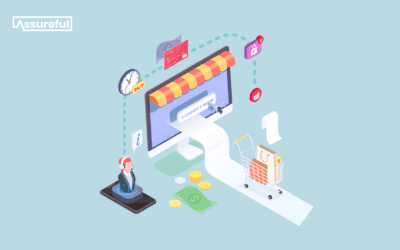Ignoring product liability could be the biggest mistake your eCommerce business makes.
No business owner wants a string of customer complaints. But it’s about more than that – potential lawsuits, recalls, and a tarnished reputation.
Understanding the different forms of product liability and how they can impact your business is vital to avoiding legal issues and maintaining happy, loyal customers.
What is Product Liability?
Product liability is the legal obligation of manufacturers, distributors, suppliers, and retailers to ensure that the products they make or sell are safe for public use and free from defects.
It’s a core aspect of consumer protection, aiming to shield consumers from potential harm caused by defective products and providing a means for compensation if a product does result in injury or property damage.
There are three main types of product liability defects covered under product liability legislation:
Legal challenges are cited as one of the top reasons new businesses fail, accounting for 19% of failures. So let’s look at some examples of product liability causes and how to reduce your risks as an eCommerce business.

Design Defects – Fundamental Flaws
Design defects are inherent flaws in a product’s design that make it unsafe for use. These issues exist before the product is even manufactured. They could be a result of inadequate testing of prototypes or a failure to incorporate necessary safety features.
For instance, a product that gets excessively hot might lack safeguards to prevent users from getting burnt, or a machine might not have an auto shut-off mechanism when the operator isn’t holding with both hands.
The impact of design defects can be significant. If a product’s design is fundamentally flawed, the danger and potential liability case against you could extend to every unit of that product you sell. This could lead to serious customer injuries, mass recalls, negative publicity, and potentially, the end of your eCommerce business.
A famous example of a fundamental design flaw is the Buckyballs case study. This seemingly harmless magnetic toy turned into a liability nightmare due to inherent design flaws that made it dangerous for children, even though it wasn’t positioned as a children’s toy (but we’ll talk about marketing and positioning later).
How to Prevent Design Flaws
Preventing design flaws requires proactive measures before your products go into production:
- Extensive Testing: Before deciding to sell a product, create samples and test them thoroughly. This can help identify any design flaws early on.
- Product Selection: Be cautious about the products you choose to sell. Avoid items with designs known to be problematic or those that have a history of safety issues.
- Compliance with Standards: Ensure that all products comply with industry and safety standards relevant to their category and the countries in which you’re selling. For US sellers, the CPSC website should be your first port of call for the latest safety regulations.

Marketing Defects – Positioning Matters
Marketing defects, also known as “failure to warn”, are all about how a product is advertised and sold. This could be anything from misleading advertising messages and incorrect product listings to improper labeling and a lack of warnings about the risks associated with the product.
This type of liability arises when a product lacks adequate instructions or warnings about its proper use, and this lack of guidance can lead to injury. Take the BuckyBalls case study: marketing came into play because the product was improperly positioned, lacking adequate warnings against the swallow risk to children.
Even if the product is flawlessly designed and manufactured as it should be, the absence of sufficient warnings or instructions can render it unreasonably dangerous to users.
You might have heard of The McDonald’s hot coffee case that cost the fast food chain $3 million due to a lack of warnings on their coffee cups about the temperature of the drinks.
Bullock v. Philip Morris is another famous case in which one of the world’s largest tobacco companies paid $28 million for hiding their knowledge of the addictive nature of smoking and its link to lung cancer.
How to Prevent Marketing Liability
Preventing marketing liability involves clear communication and transparency:
- Warnings and Instructions: Ensure that all products come with clear, understandable instructions and warnings. These should be easily accessible to customers, possibly through your website.
- Language and Localization: Consider the language and cultural context of your customer base. Instructions and warnings should be provided in the primary language of your customers and tailored to be culturally appropriate. This is especially crucial if you’re taking advantage of Amazon’s global selling program.
- Product Descriptions: Your website or product listings on marketplaces like Amazon are your customer’s first contact with your brand and your first opportunity to ensure they understand the risks and proper way to use your products. Clearly communicating this won’t just mitigate your liability risk, it creates an all-round better customer experience as well.
- Educate Consumers: Consider creating educational content (like blogs, videos, or FAQs) about product safety and proper use. This not only helps in preventing marketing liability but also adds value to your customer’s shopping experience.

Manufacturing Defects
Manufacturing defects occur when a product deviates from its intended design during the production process. In other words, the design is safe, but the product hasn’t been manufactured properly.
This could be due to any number of reasons, such as a fault in the production line or an operator error.
Manufacturing defects are often more contained than design or marketing defects, usually affecting a certain batch or batches of a product – unless the defect goes undetected.
The highly publicized case of hoverboards catching fire under the Christmas tree due to faulty batteries is one example of such a case.
How to Prevent Manufacturing Defects
Preventing manufacturing defects involves stringent quality control and supplier management:
- Quality Control: Implement rigorous quality control with plenty of quality gates during the manufacturing process. This helps to detect defects early and prevent defective products from reaching consumers. This is especially relevant when importing products from countries like China, where regulatory standards differ from those in the US.
- Supplier Selection: Carefully select and monitor suppliers. Choose manufacturers with a strong track record for safety and reliability, and periodically review their performance.
- Feedback Monitoring: Actively monitor customer feedback for any mention of potential defects. If a pattern of defects emerges, take prompt action to investigate and rectify the issue.
As a brand, detecting defects as quickly as possible is in your best interest. After all, the more defective products you manufacture or the more marketing materials you create without the proper level of caution, the more it’ll affect your bottom line.
By understanding the different types of product liability and taking proactive steps to prevent them, you can protect your eCommerce business from potential legal issues, ensure customer safety, and protect the longevity of your brand.
Don’t let the unforeseeable jeopardize your success.
Explore pay-as-you-sell product liability insurance designed specifically for eCommerce businesses.
No obligation quote.
Policies can be canceled at any time, with 30 days’ notice.




0 Comments